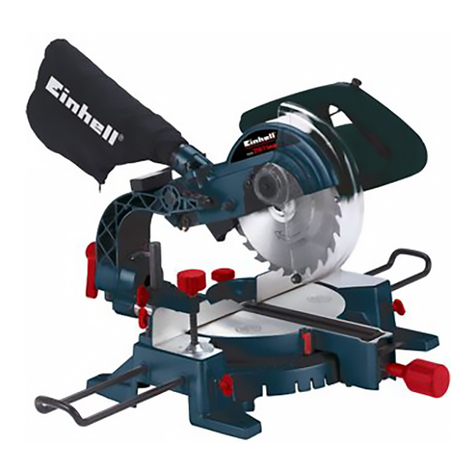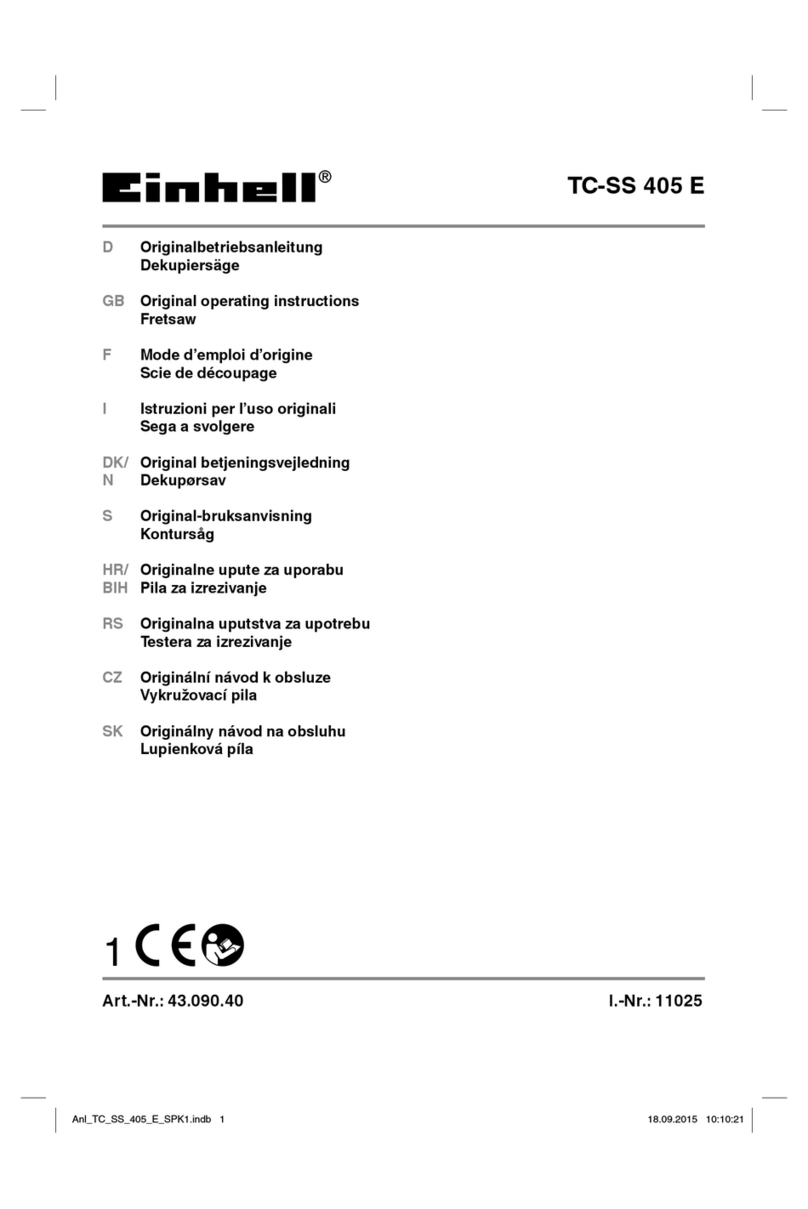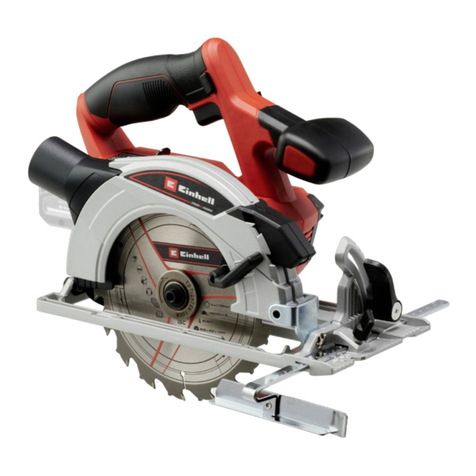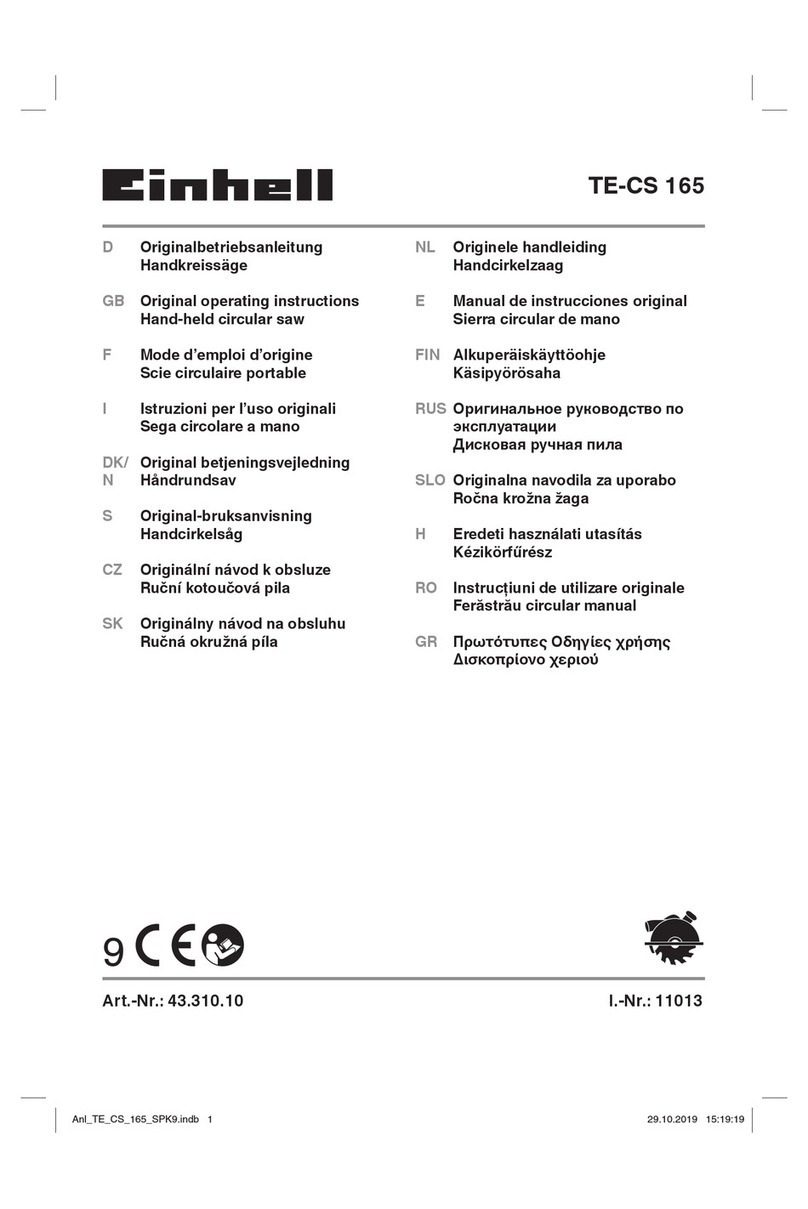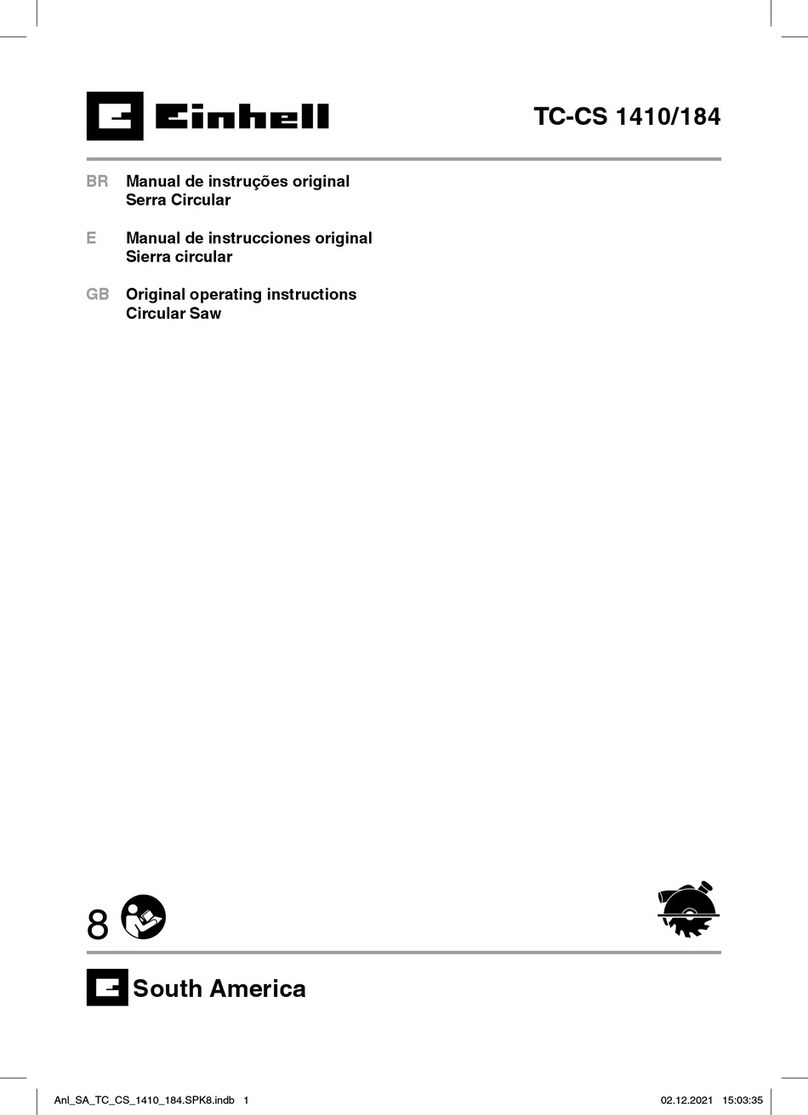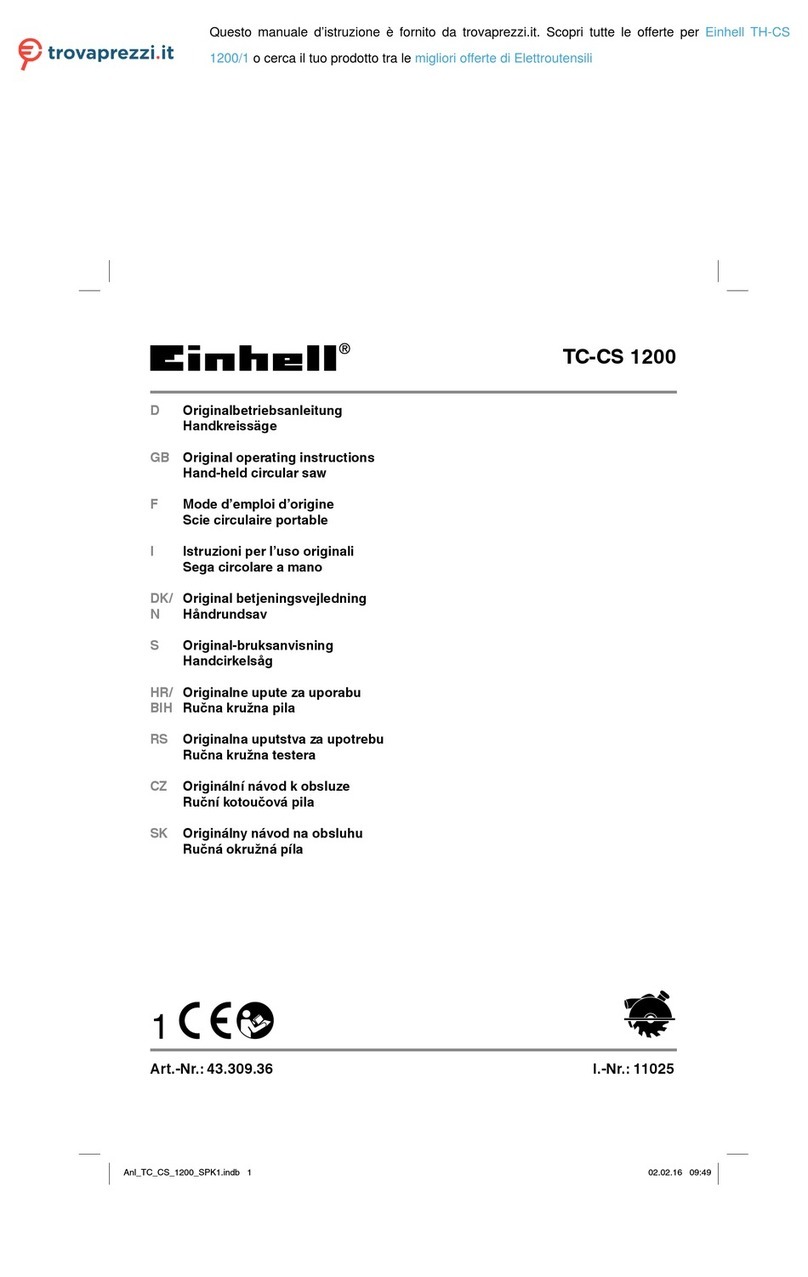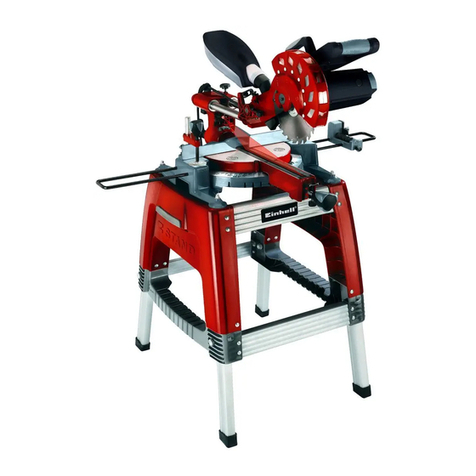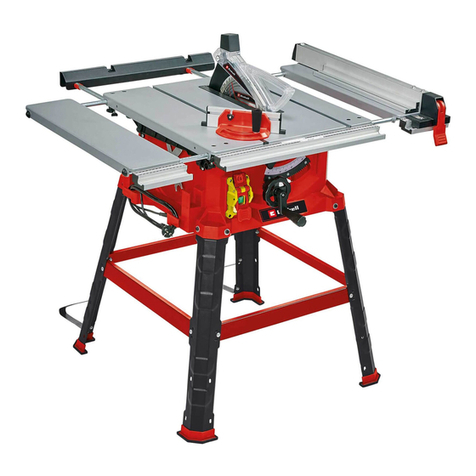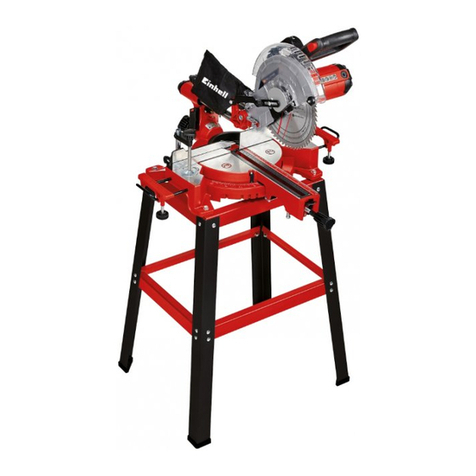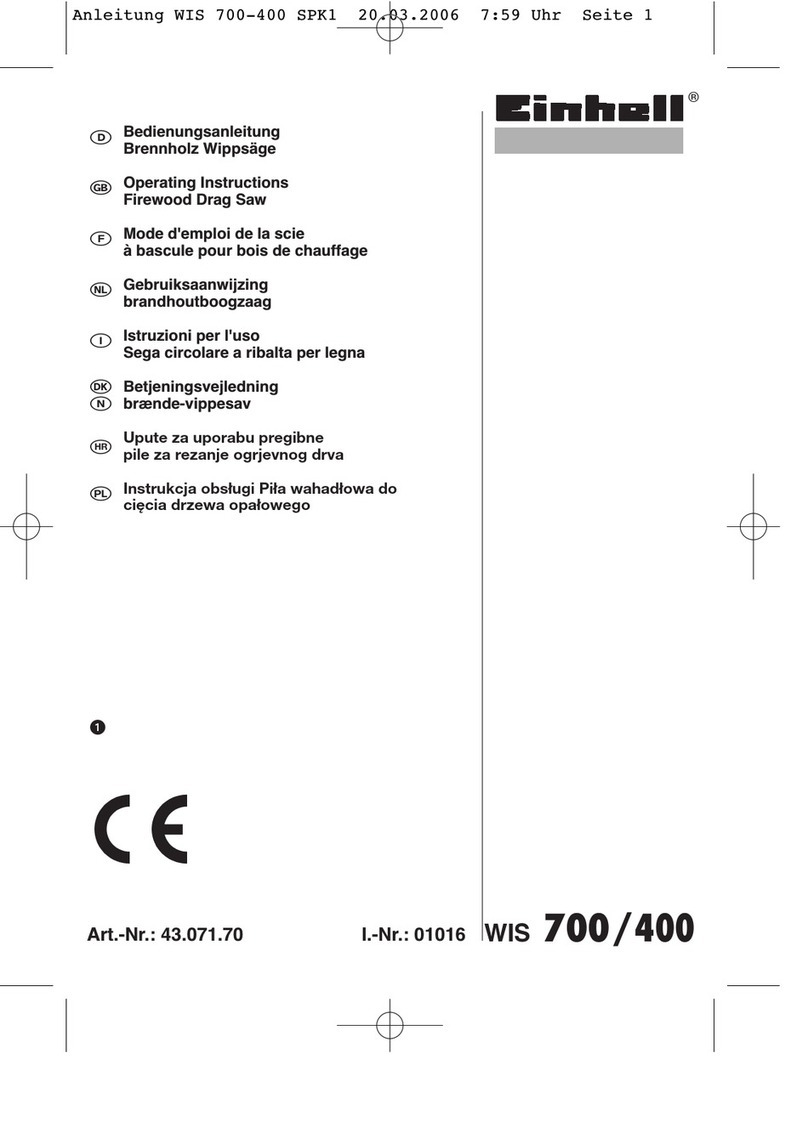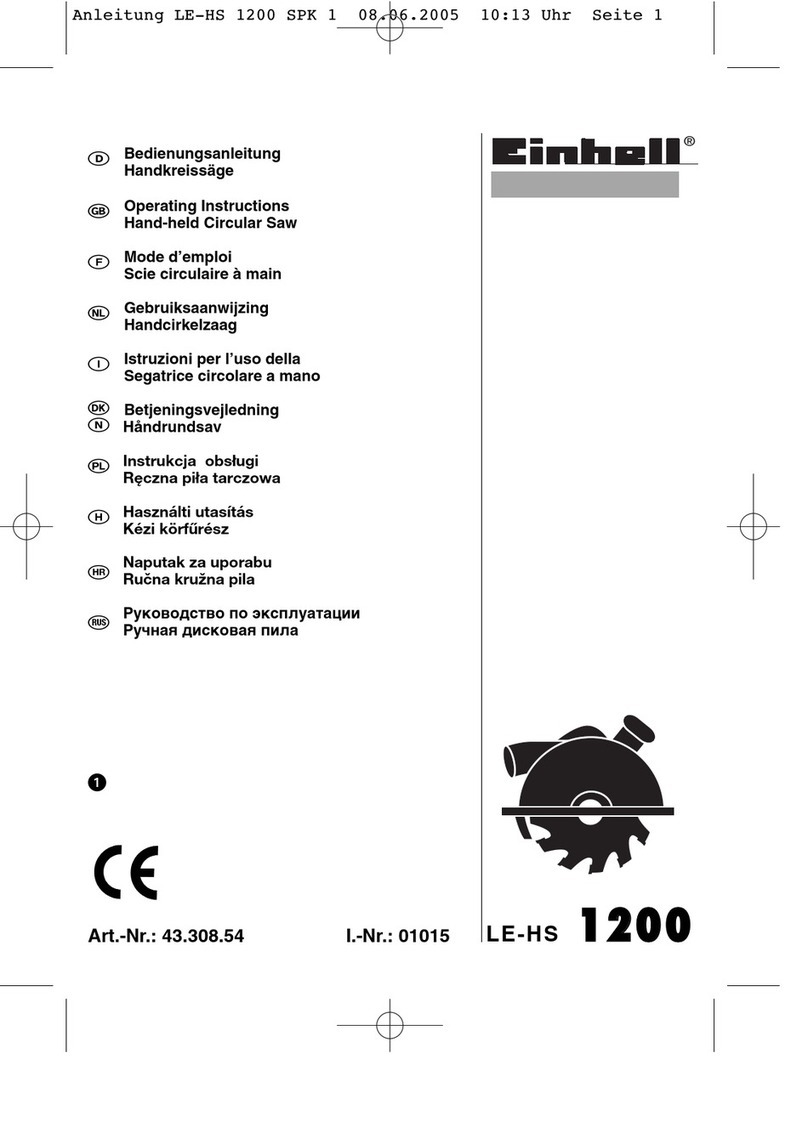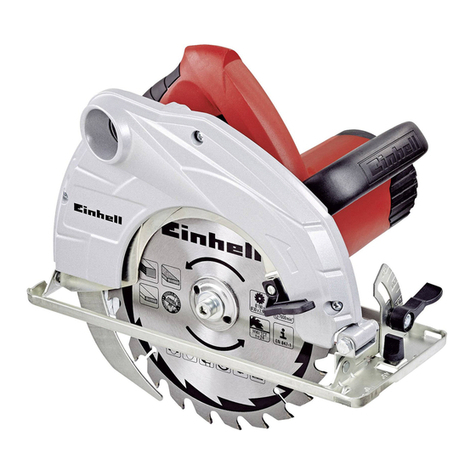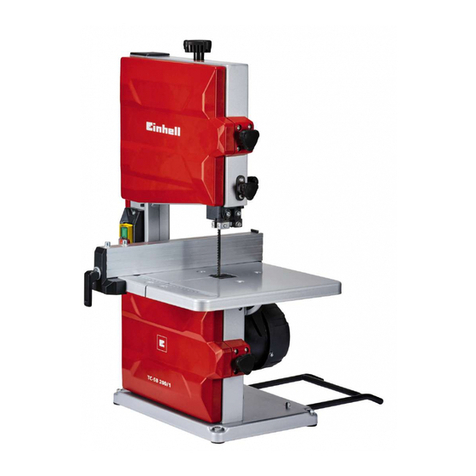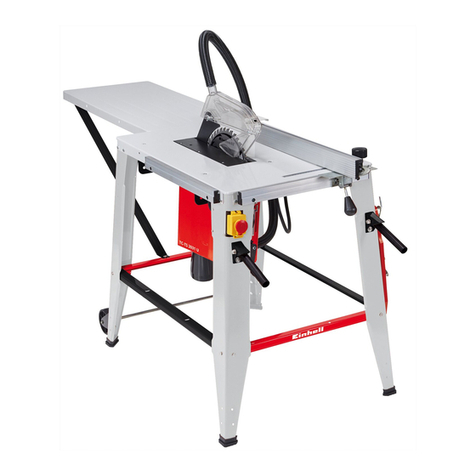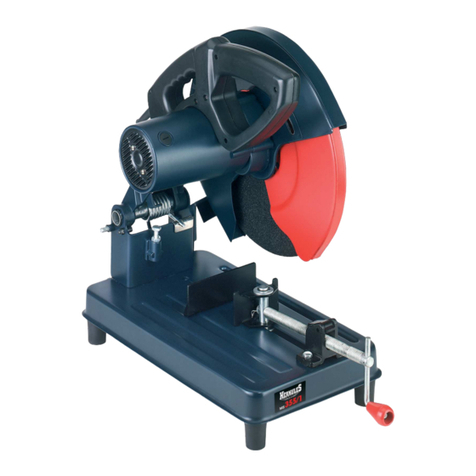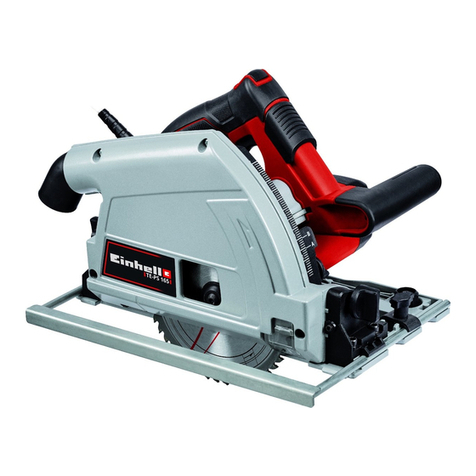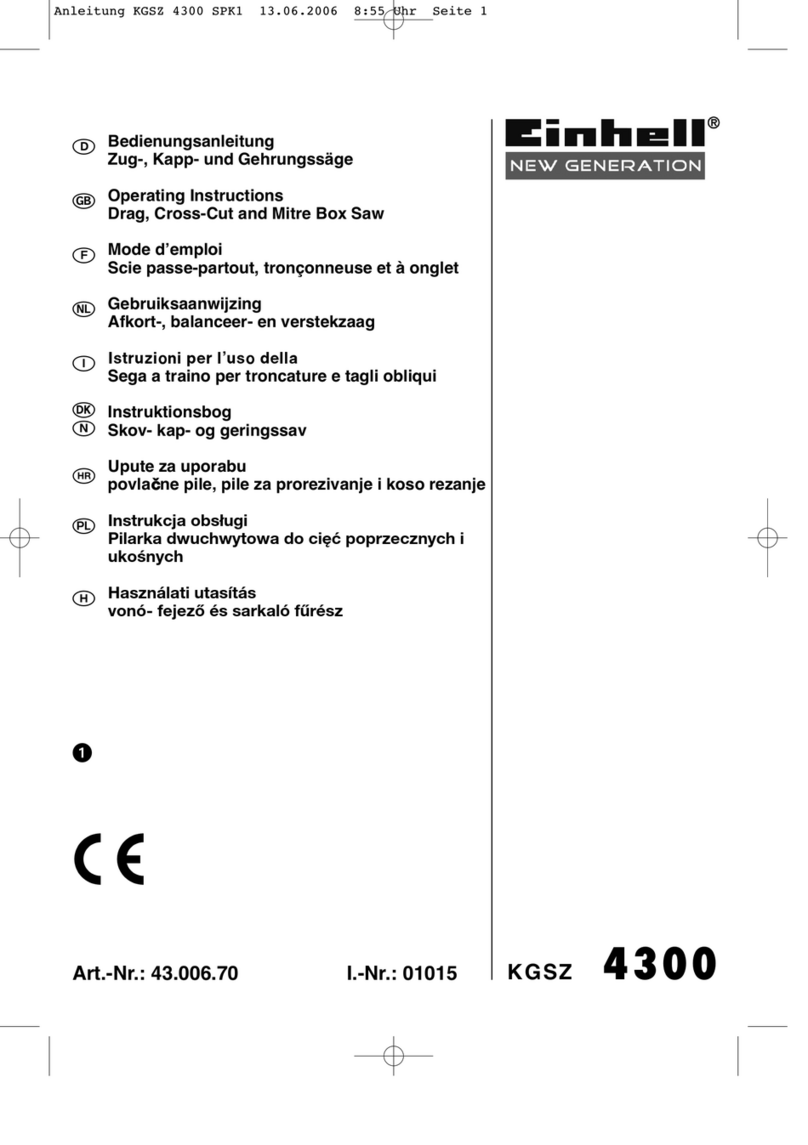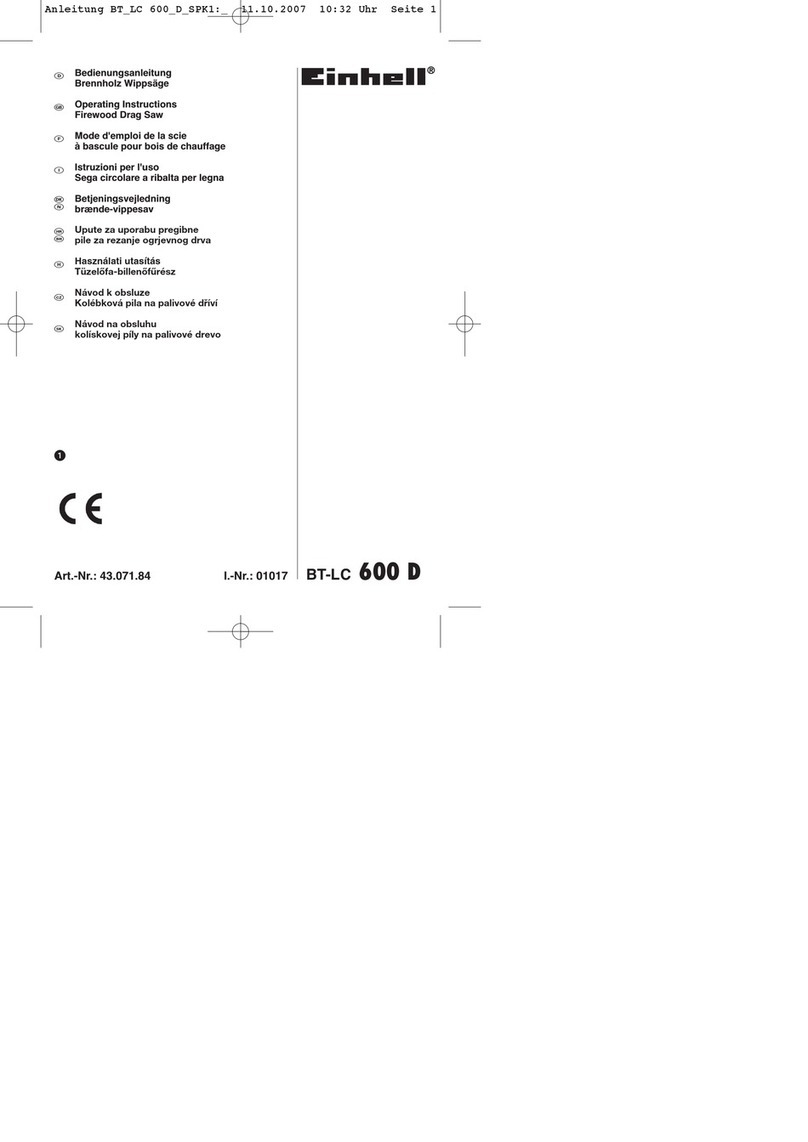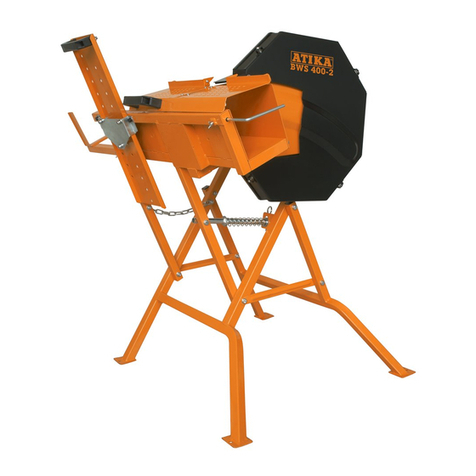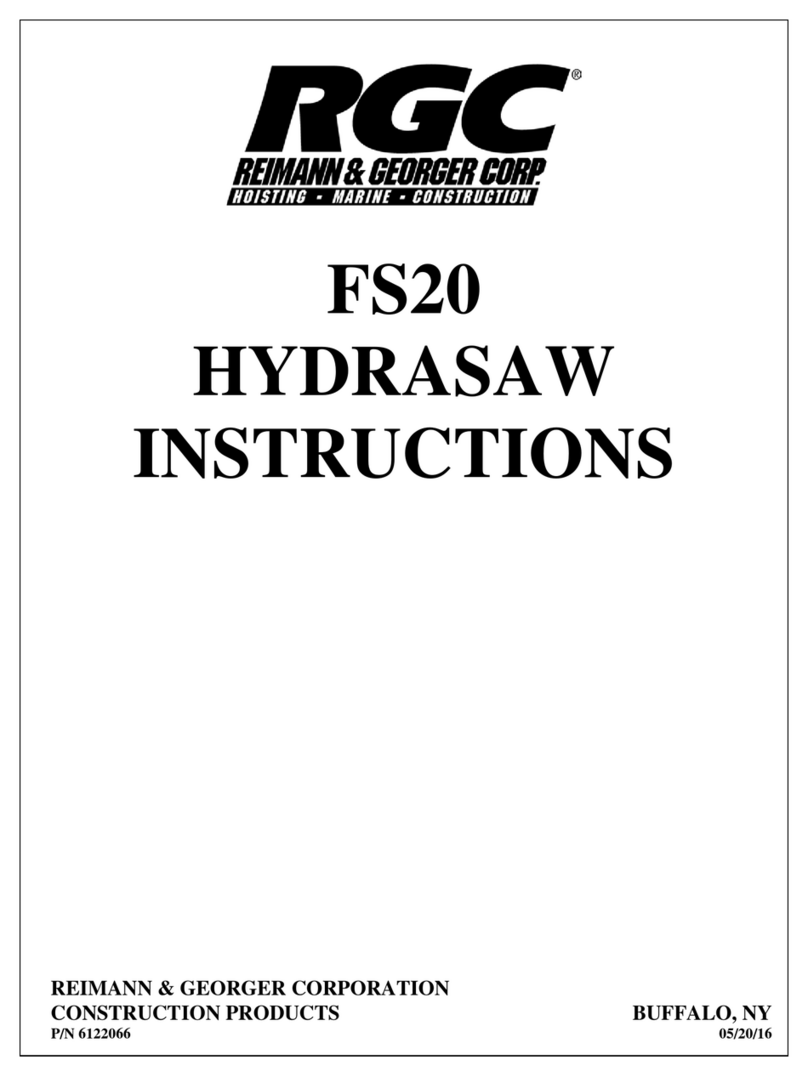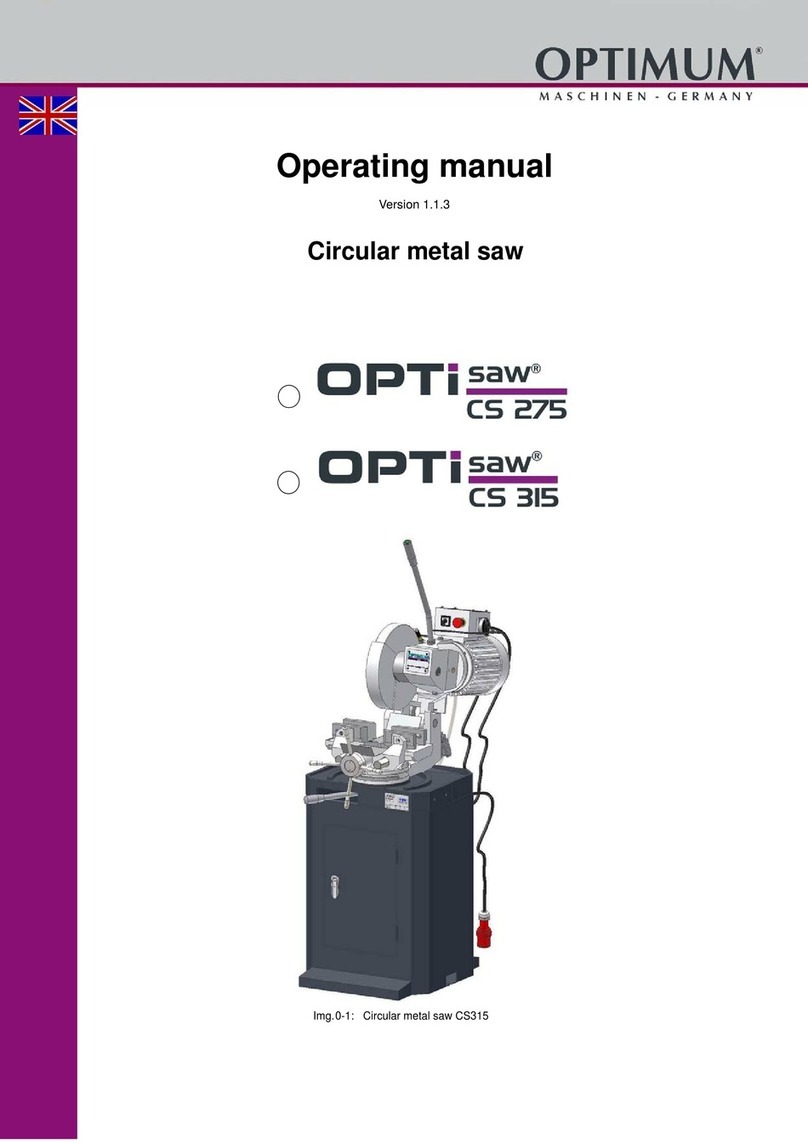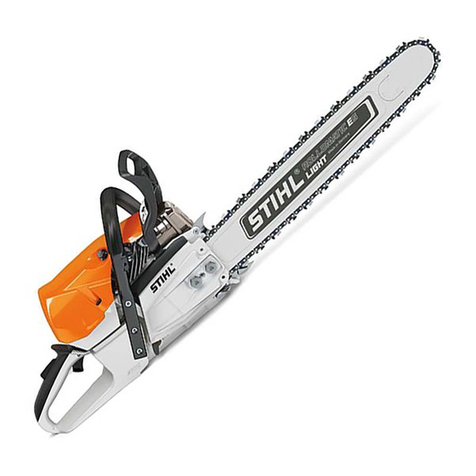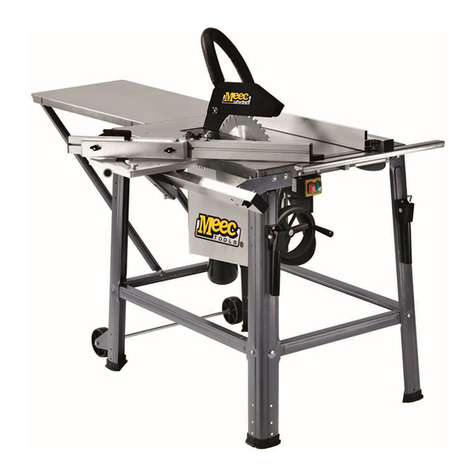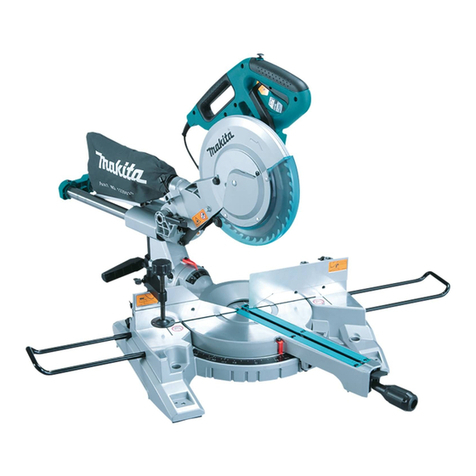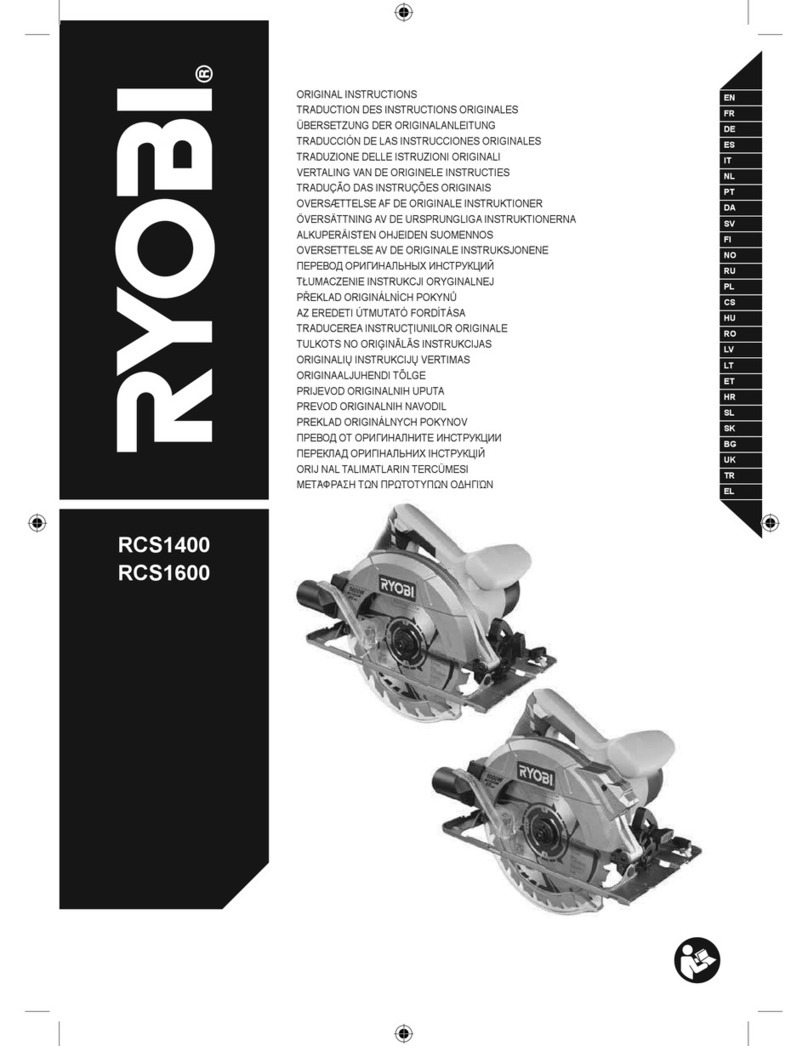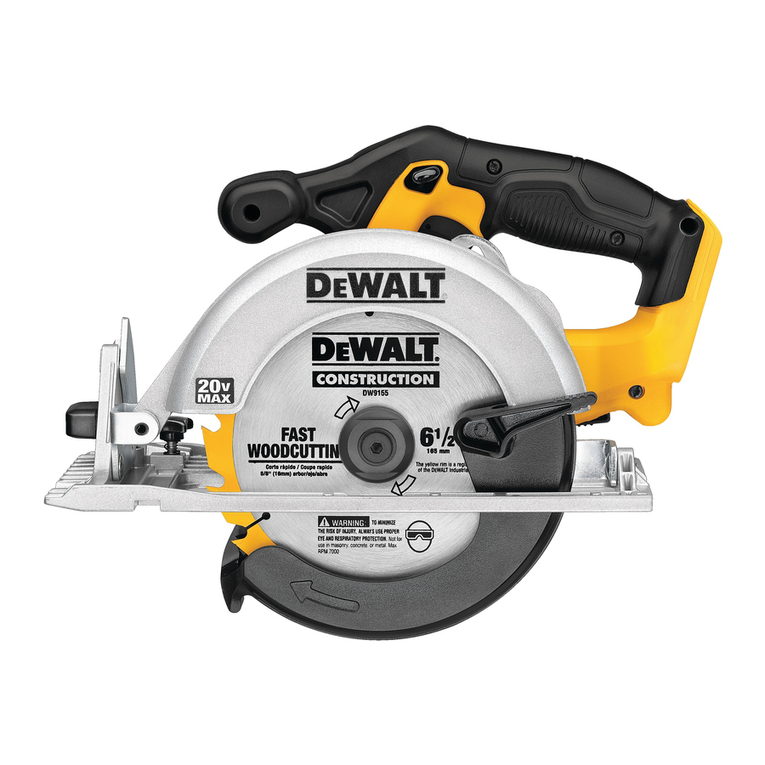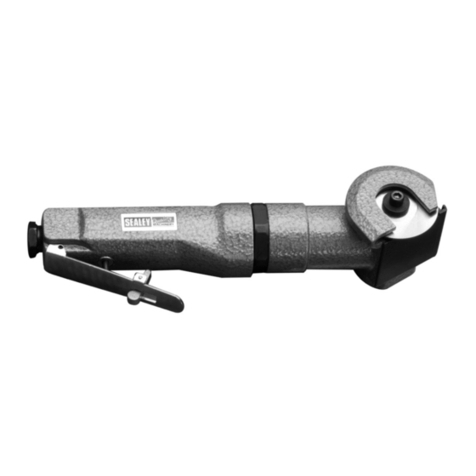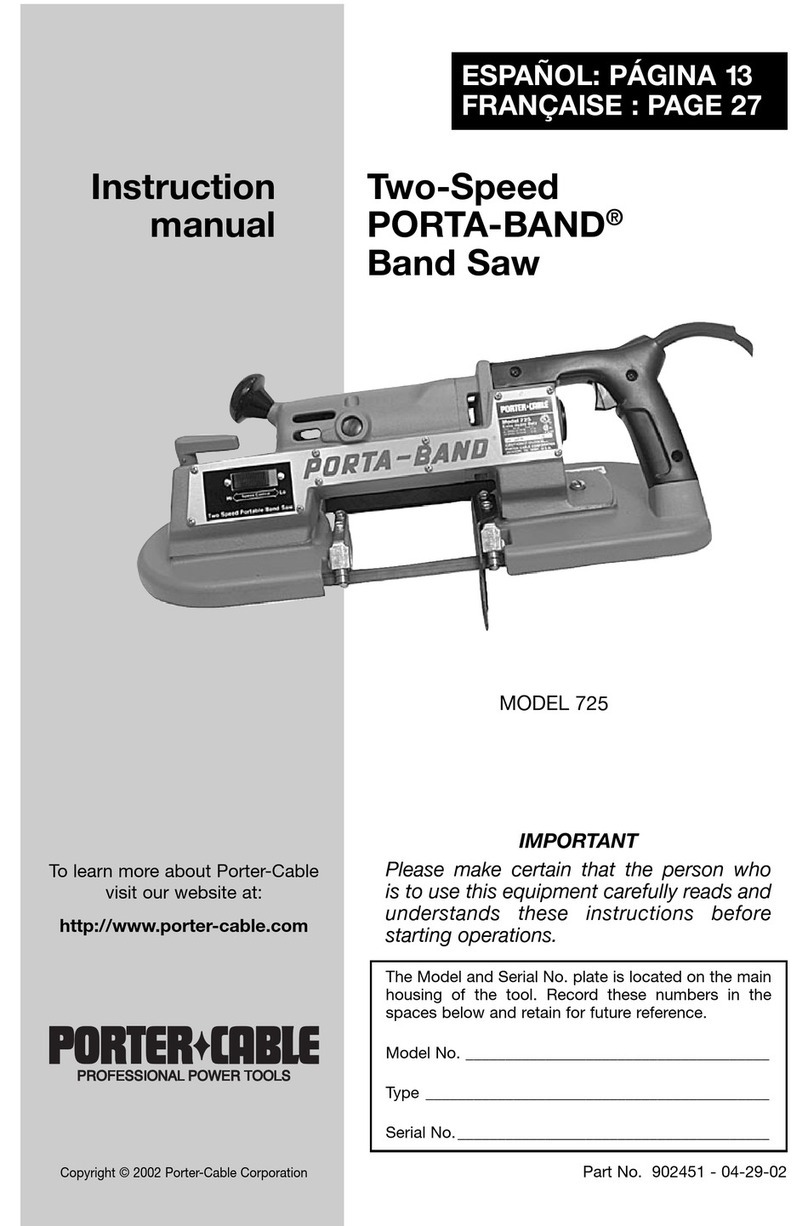
GB
- 10 -
e) Avoid abnormal working postures. Make
sure you stand squarely and keep your
balance at all times. This will enable you to
control the power tool better in unexpected
situations.
f) Wear suitable clothes. Never wear loose
fitting clothes or jewelry. Keep hair and
clothing away from moving parts. Loose
clothing, jewelry or long hair can be caught by
moving parts.
g) If dust extraction devices and dust coll-
ection devices can be fitted, they must be
connected and must be used correctly.
The use of a dust extractor can reduce the
dangers posed by dust.
h) Do not allow yourself to be lulled into a
false sense of security and do not ignore
the safety regulations covering electric
power tools, even if you are familiar with
the power tool after having used it many
times. Carelessness can lead to serious inju-
ries in just a fraction of a second.
4. Using and handling the power tool
a) Do not overload your power tool. Use the
correct electric tool for the job in hand.
The correct tool will enable you to work better
and more safely within the specific perfor-
mance range.
b) Do not use an electric power tool if the
switch is defective. An electric power tool
that cannot be switched on or offis dange-
rous and must be repaired.
c) Pull the plug out of the socket and/or
remove the removable battery pack be-
fore making any adjustments to the tool,
changing plug-in tool parts or putting the
power tool down. These precautions will
prevent the power tool starting accidentally.
d) Keep unused electric tools out of the
reach of children. Do not allow people
who are not familiar with the power tool
or who have not read these instructions
to use the power tool. Electric tools are
dangerous if they are used by inexperienced
people.
e) Look after power tools and plug-in tools
with care. Check that moving parts
function correctly and do not jam, and
whether any parts are broken or dama-
ged such that they adversely affect the
function of the power tool. Have damaged
parts repaired before you use the power
tool. Many accidents are caused by poorly
maintained electric tools.
f) Keep cutting tools sharp and clean. Ca-
refully maintained cutting tools with sharp
cutting edges will jam less and are easier to
control.
g) Use the power tool, plug-in tools, etc.
as set out in these instructions. Take ac-
count of the conditions in your work area
and the job in hand. Using electric tools for
purposes other than the one for which they
are designed can result in dangerous situa-
tions.
h) Keep the handles and grip surfaces dry,
clean and free from oil and grease. If the
handles and grip surfaces are slippery, it will
not be possible to operate and control the
power tool safely in unforeseen situations.
5. Service
a) Have your power tool repaired only by
trained personnel using only genuine
spare parts. This will ensure that your power
tool remains safe to use.
Special safety information for miter saws
Please note that your equipment may not have all
the functions described in this safety information.
Read the safety information carefully and observe
all the instructions required for your machine.
a) Miter saws are designed for cutting wood
or wood-type products. They are not
intended to be used for cutting ferrous
materials such as rods, bars, screws, etc.
Abrasive dust will lead to moving parts such
as the bottom guard hood getting blocked.
Sparks from cutting will burn the bottom gu-
ard hood, the insertion plate and other plastic
parts
b) If possible, use clamps to secure the
workpiece. If you hold the workpiece with
your hand, you must keep your hand at least
100 mm away from each side of the saw bla-
de at all times. Never use this saw for cutting
workpieces which are too small, to clamp
them or to hold them with your hand. If your
hand is too close to the saw blade there is a
greater risk of injury from contact with the saw
blade.
c) The workpiece must immovable and eit-
her securely clamped or pressed against
the stop and the table. Do not push the
workpiece into the saw blade and never cut it
“free-handed”. Loose or moving workpieces
could be catapulted out at high speed and
Anl_TC_SM_2131_2_Dual_EX_UKCA.indb 10Anl_TC_SM_2131_2_Dual_EX_UKCA.indb 10 30.09.2021 08:28:3530.09.2021 08:28:35
